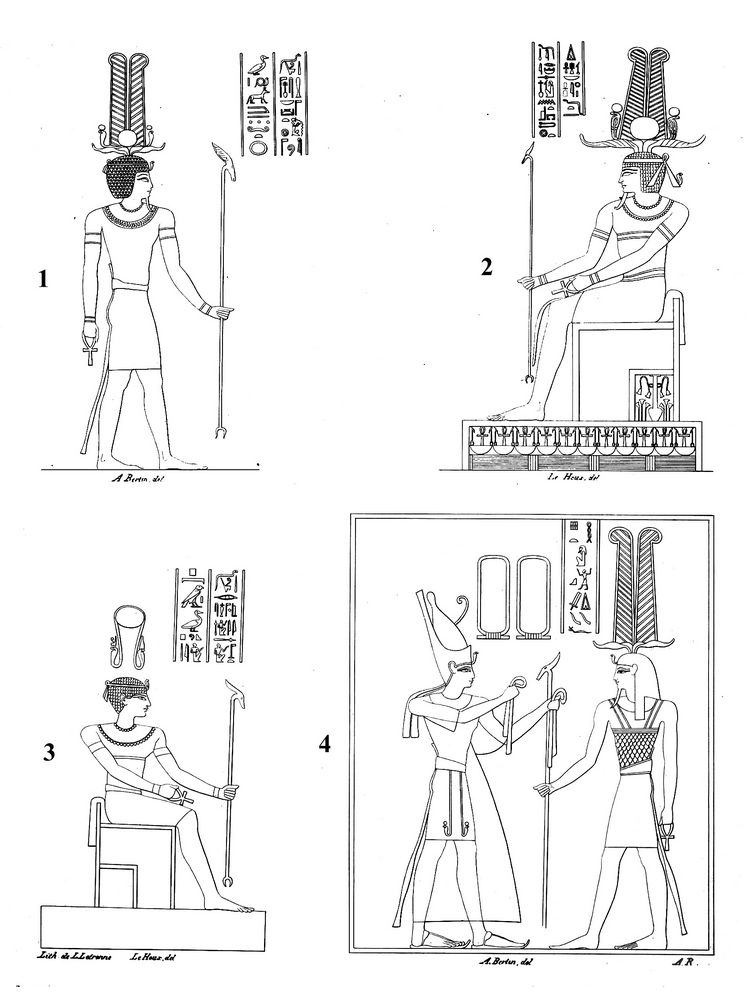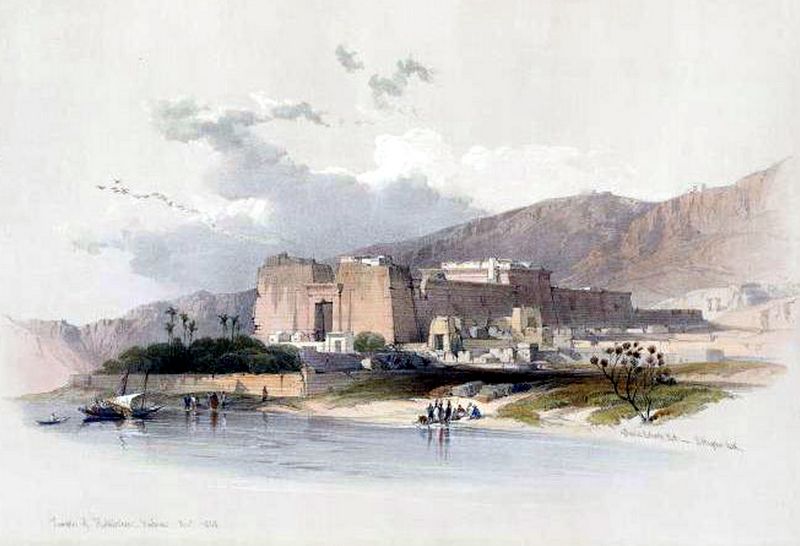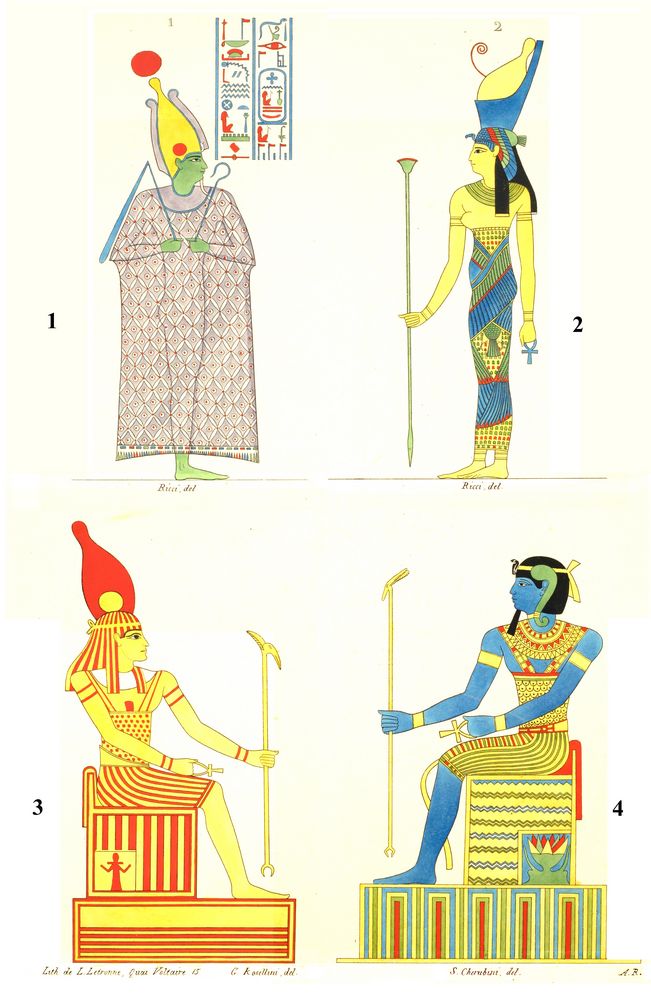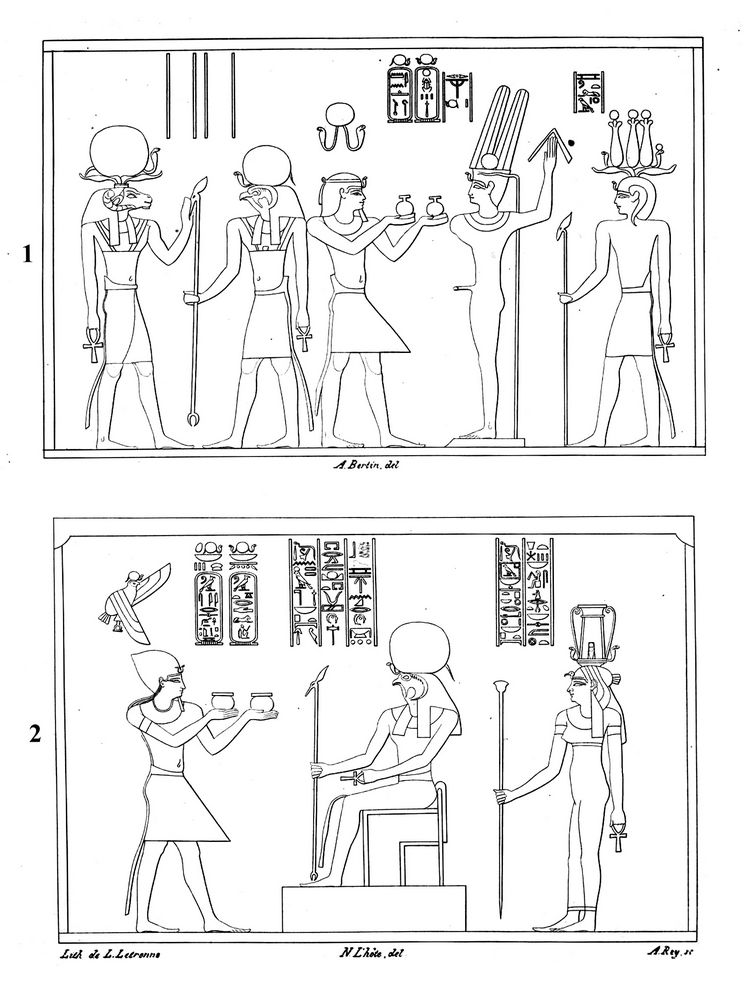| Southport : Original Sources in Exploration | | |
Letters Written from Egypt and Nubia, 1828-1829 Jean-Francois Champollion | | | | |
|
Eleventh Letter, part 2 (Jan. 24-27, 1829).
Near
the Dakka pylon, I recognized the remains of a building, of which some
large blocks of stone still retain a portion of dedication; it was a
temple of Thoth, built by Pharaoh Moaris. Here is another fact which,
like many other similar ones, proves that the Ptolemies, and the
Ethiopian Ergamenes himself, only rebuilt temples where (p.124) they
existed in Pharaonic times, and to the same divinities that have always
been adored there. This point was very important to establish, in order
to demonstrate that the last monuments erected by the Egyptians
contained no new form of divinity. The religious system of this people
was so one, so united in all its parts, and fixed from time immemorial
in a manner so absolute and so precise, that the domination of the
Greeks and the Romans produced no innovation; the Ptolemies and the
Caesars only rebuilt, in Nubia as in Egypt, what the Persians had
destroyed, and rebuilt temples where there were formerly some, and
dedicated to the same gods.

Dakka is the southernmost point
where I have encountered works executed under the Ptolemies and the
emperors. I am convinced that Greek or Roman domination never extended,
at most, beyond Ibrim. Also I have found from Dakka to Thebes an
almost continuous series of buildings built at these two periods: the
Pharaonic monuments are rare, and those of the time of the Ptolemies
and the Caesars are numerous, and almost all unfinished. I have
concluded that the destruction of the Pharaonic temples primitively
existing between Thebes and Dakka, in Nubia, must be attributed to the
Persians, who had to follow the Nile valley to Sebouâ, where they took,
to go to Ethiopia ( and to come back), the road of the desert,
infinitely shorter than that of the river, impracticable besides for an
army, with (p.125) because of many cataracts; the desert road is the
one still followed today by most caravans, armies and isolated
travellers. This march of the Persians saved the monument of Amada,
which was easy to destroy since it is not of great extent. From Dakka
to Thebes we only see second editions of the temples.
It is
necessary to except the monument of Girche [Gerf Hussein] and that of Bet-oualli [Beit el Wali] which
the Persians could not destroy, since it would have been necessary to
cut down the mountains in which they are dug with the chisel. But these
spéos, and especially the first one, were devastated as much as the
nature of the place allowed it.

We
arrived at Ghirche-Hussan or Gerf-Hussein on January 25. It is still
here, as at Ibsamboul, Derr and Sébouâ, a veritable Rhamesseion or
Rhamseion, that is to say a monument due to the munificence of Rhamses
the Great. This one is dedicated to the god Phtha, a character of which
we find a discolored imitation in the Hephaistos of the Greeks and the
Vulcan of the Latins. Phtha was the eponymous god of Ghirche, who in
the Egyptian language bore the name of Pthahei or Thyptah, abode of
Phtha. Thus this Nubian town formerly bore the same sacred name as
Memphis: it seems that these sumptuous names were fashionable in Nubia,
since the hieroglyphic inscriptions taught me, for example, that Derri
had the same name as the famous Heliopolis of Egypt , abode of the Sun,
and that the miserable village now called Sébouâ, and whose monument is
so poor, (p.126) was decorated with the name of Amonei, that of the
Thebes of the hundred gates.

[Description pl.56 in Monuments of Egypt and Nubia by J-F Champollion (1835):
"1. Bas-relief representing four deities seated on the same thalamus at the back of the sanctuary of the temple of Ghirché.
2. Two young men carrying, one a gazelle, the other a young ox. (Pronaos of the temple of Dendur)
3
and 4. Graded inscriptions on the right and left columns of the pronaos
of the temple of Thoth, at Dakka, in honor of Ptolemy Evergetes and
Cleopatra.
5. Dedication on the left, from the temple of Dakka, bearing the name of the same Queen Cleopatra.
6. Greek inscription placed in the middle of the frieze of the temple of Dakka in honor of King and Queen Ptolemy Evergetes.
7. Ibis crouching and wearing the hairstyle of the second Hermes. (Dakka Temple)."]
The built portion of the hemispeos
of Ghirché is very nearly destroyed, and the part excavated in the
rock, an immense work, has been degraded with a kind of research.
However, I was able to identify the subject of all the bas-reliefs and
a large portion of the legends. The great hall is supported by six
enormous pillars, in which six colossi have been carved, offering the
singular contrast of barbarous work alongside bas-reliefs of very fine
execution. On the side walls are eight square niches each containing
three seated figures, sculpted in full relief. The character occupying
the middle of these niches, or small chapels, is always the Sun god
Rhamses, the patron of Sësostris, invoked under the name of Great God ,
and as residing in Phthaei, Amonei and Thyri, that is to say in
Ghirché, Séboud and Derr, where indeed exist Rhamséion dedicated to
the Sun god Rhamsès, the same one who is adored in Ghirché, as son of
Phtha and Hathor, the great deities of this temple. The study of
Ghirché's religious paintings sheds much light on the myth of these
three characters.

[Description pl.57b in Monuments of Egypt and Nubia by J-F Champollion (1835):
"1)
The god Arihosnofré standing, and 2) the same god seated (figures
of divinities with the details of their costume and their insignia),
are taken from the temple of Dakka; and no. 3 from that of Dendur
in Nubia.
4. A king makes an offering to the god Phtha; subject taken from the temple of this god at Ghirache, in Nubia."]
The
day of the 26th was given in part to the little temple of Dendur
(fig.3). Here we fall back into the modern; it is an unfinished work
from the time of the Emperor Augustus; but, although not very important
by its extent, this monument interested me very much, since it is
entirely relative to the incarnation of Osiris, in human form, on
earth. Our evening of the 25th had (p.127) been enlivened by a superb
echo discovered by chance opposite Dendurr, where we had just landed.
He repeats very distinctly and in a sonorous voice up to eleven
syllables. Our Italian companions took pleasure in making him repeat
verses of Tasso, interspersed with gunshots fired from all sides, and
to which the echo answered by cannon shots or claps of thunder.

The
temple of Kalabsha (fig.4) had its turn on the 27th. It is here that I
discovered a new generation of gods, and which completes the circle of
forms of Ammon, the starting point and meeting point of all the divine
essences. Ammon-Ra, the supreme and primordial Being, being his own
father, is qualified as the husband of his mother (the goddess Mouth),
his feminine portion enclosed in his own essence, both male and female,
Arsenothelos: all the other gods Egyptians are only forms of these two
constituent principles considered under different reports taken
separately. They are only pure abstractions of the great Being. These
secondary, tertiary, etc. forms establish an unbroken chain which
descends from the heavens and materializes to the incarnations on
earth, and in human form. The last of these incarnations is that of
Horus and this extreme ring of the divine chain forms under the name of
Horammon the omega of the gods, of which Ammon-Horus (the great Ammon,
active and generating spirit) is the Alpha. The starting point of
Egyptian mythology is a Triad formed of the three parts of Ammon-Ra,
namely Ammon (the male and the father), (p.128) Mouth (the female and
the mother) and Khons (the child son ). This Triad, having manifested
itself on earth, resolves itself into Osiris, Isis and Horus. But the
parity is not complete, since Osiris and Isis are brothers.

It
was at Kalabsha that I finally found the final Triad, the one whose
three members merge exactly into the three members of the initial Triad
Horus indeed bears there the title of husband of the mother; and the
son he had by his mother Isis, and who is called Malouli (the Mandouli
in the Greek proscynemata), is the principal god of Kalabsha, and fifty
bas-reliefs give us his genealogy. Thus the final Triad was formed of
Horus, his mother Isis and their son Malouli, characters who fit
exactly into the initial Triad, Ammon, his mother Mouth and their son
Khons. Also Malouli was adored at Kalabsha in a form similar to that of
Khons, under the same costume and adorned with the same insignia, only
the young god here bears the title of Lord of Talmis, that is to say of
Kalabsha, which the Greek geographers indeed call Talmis, a name which
is found elsewhere in the inscriptions of the temples.

[Description pl.54 in Monuments of Egypt and Nubia by J-F Champollion (1835):
"Plate 54 (coloured), taken from the temple of Kalabsha, in Nubia.
1)
Osiris. 2) Mouth, standing. 3) Mandouli. 4) Horus, seated,
with The insignia of their rank; polychrome sculptures."]
I
have, moreover, acquired the certainty that there had existed in Talmis
three editions of the temple of Malouli; one under the Pharaohs and
from the reign of Amenophis II, successor of Moeris; one from the time
of the Ptolemies; and the last, the current temple which was never
finished, under Augustus, Caius Caligula and Trajan; and the legend of
the god Malouli, in a fragment of bas-relief from the first temple,
used in the construction of the third, does not (p.129) differ in any
way from the most recent legends. Thus, the local worship of all the
towns and villages of Nubia and Egypt never received any modification,
nothing was innovated, and the old gods still reigned the day when the
temples were closed by Christianity. These gods, moreover, had somehow
divided Egypt and Nubia between them, thus constituting a kind of
feudal division. Each town had its patron; Chnouphis and Saté reigned
at Elephantine, at Syene and at Béghé, and their jurisdiction extended
over the whole of Nubia Phré, at Ibsamboul, at Derr and at Amada;
Phtha, in Ghirche; Anouke, in Maschakit; Thoth, the superintendent of
Chnouphis, over all Nubia, had his principal fiefs at Ghébel-Addèh and
at Dakka Osiris was lord of Dendur; Isis, queen at Philae; Hathor, in
Ibsamboul, and finally Malouli, in Kalabsha. But Ammon-Ra reigns
everywhere and usually occupies the right of the shrines.
It was
the same in Egypt, and it is conceivable that this partial cult could
not change, since it was attached to the country by all the power of
religious beliefs. Moreover, this worship, so to speak exclusive in
each locality, produced no hatred between the neighboring towns, since
each of them admitted into its temple (as syntrones), and that by a
very well calculated spirit of courtesy, the divinities adored in the
bordering cantons. Thus I found at Kalabsha the gods of Ghirché and
Dakka in the south, those of Déboud in the north, occupying a
distinguished place; in Déboud, the gods of Dakka and Philae, in
Philae, (p.130) those of Déboudet of Dakka, in the south those of
Béghe, Elephantine and Syène in the north; finally in Syène, the gods
of Philae and those of Ombos.

[Description pl.54a in Monuments of Egypt and Nubia by J-F Champollion (1835):
"1.
The gods Chnouphis, and Phré with the head of a hawk. are face to face,
while Pharaoh Amenhotep II offers wine to Arsaphi followed by Harphre.
2.
The emperor Augustus, his head helmeted, offers wine to the god Phre
with the head of a hawk and followed by the goddess Hathor."]
It was again at Kalabsha that I
first noticed the violet color used in the painted bas-reliefs; I ended
up discovering that this color came from the mordant or mixture applied
to the parts of these paintings which were to receive the gilding; thus
the sanctuary of Kalabsha and the room which precedes it were gilded as
well as the sanctuary of Dakka.
Footnotes:
[Continue to part 3 of Letter 11]
[Return to Table of Contents]
|
v |
| Southport main page Main
index of Athena Review
Copyright © 2023 Rust Family Foundation.
(All Rights Reserved). | | |
.
|